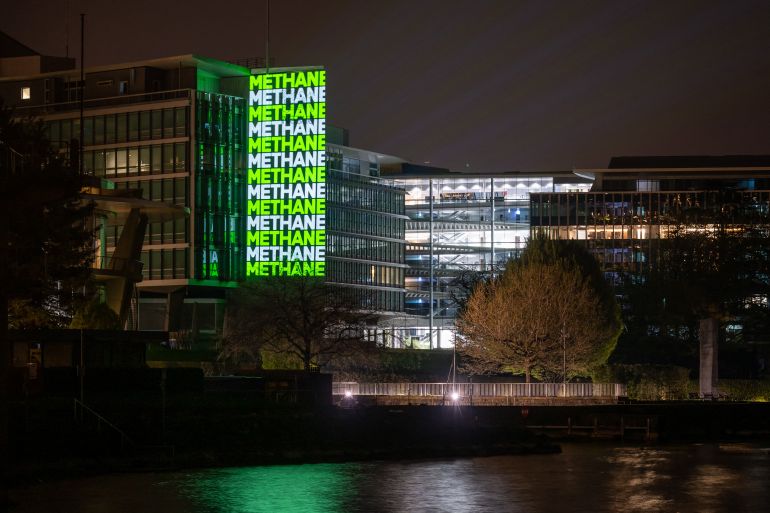Researchers warn methane emissions ‘rising faster than ever’
The largest increases in emissions of the greenhouse gas come from China and Southeast Asia.
A projection on the facade of the headquarters of Swiss food giant Nestle during a protest by climate activists over the results of the company’s methane pledges, in Vevey, Switzerland, April 19, 2023 [Fabrice Coffrini/AFP]Published On 10 Sep 202410 Sep 2024
Concentrations of methane are rising at an unprecedented pace, jeopardising global climate goals, according to researchers.
The potent greenhouse gas, the second-largest contributor to climate change after carbon dioxide, has increased by 20 percent over the past two decades despite global efforts to curb it, according to a study published by the Global Carbon Project.
In the past five years, methane concentrations have surged faster than “in any period since record-keeping began”, the study said. Increases are being primarily driven by coal mining, oil and gas production and use, cattle and sheep ranching, and decomposing food and organic waste.
In 2020, 41.8 million tonnes of methane entered the atmosphere, double the average amount added yearly in the 2010s, and over six times the average in the previous decade.
“Anthropogenic emissions have continued to increase in almost every other country in the world, with the exception of Europe and Australia, which show a slow declining trend,” Global Carbon Project’s executive director, Pep Canadell, told the AFP news agency.
The largest increases have come from China and Southeast Asia and are primarily linked to coal extraction, oil and gas production and landfills, the researchers found.
Rising methane pollution undermines efforts to limit global warming to less than 2 degrees Celsius (3.6F), the study warns.
Rice, Asia’s principal staple, causes 10 percent of global methane emissions [Nhac Hguyen/AFP]
Global pledges ‘a mirage’?
The recent spike in emissions of the gas comes despite the “Global Methane Pledge“, which saw 150 countries commit to work towards cutting 2020 global emissions levels by 30 percent by 2030.
The goals of the pledge, notably not signed by China, Russia or India, “seem as distant as a desert oasis”, said Rob Jackson from Stanford University, the lead author of the study, which appeared in Environmental Research Letters. “We all hope they aren’t a mirage.”
Despite failing to sign the 2021 pledge, China plans to host a joint summit with the United States on greenhouse gases other than carbon dioxide later this year at the United Nations climate change conference, raising hopes of broader climate action.
